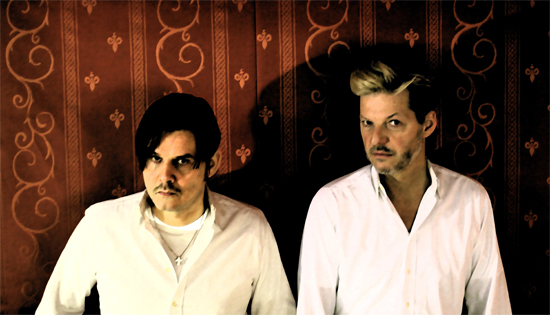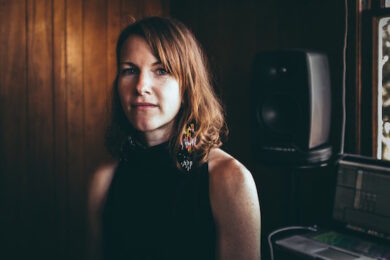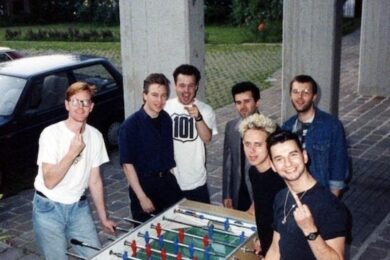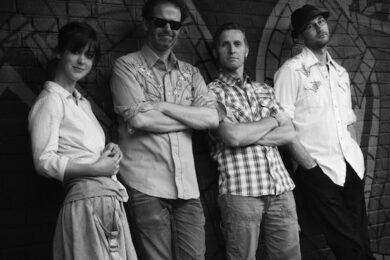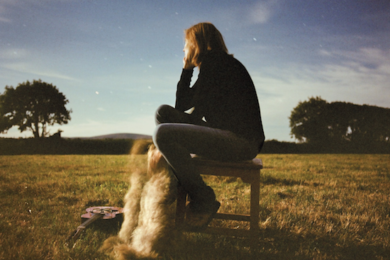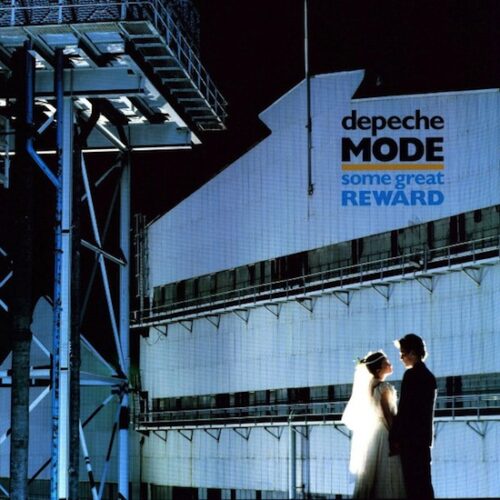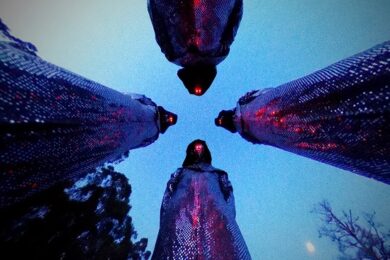Mohn is German for poppy. Not the Lady Gaga type of poppy, but rather the beautifully round-bulbed, great-tasting-on-a-nice-crusty-loaf-in-seed-form type. But if there’s a kitchen staple with which to describe the latest collaboration from Jörg Burger and Wolfgang Voigt, it’s probably treacle. A debut oozing rich, sticky sweetness, you might store the Kompakt veterans somewhere next to the rolled oats and wholemeal flour. In a cool, dark place, needless to say.
In fact, it seems that a cool, dark place really is an ideal setting for listening to Mohn. Though slow and warm – ‘Schwarzer Schwan’ and ‘Ambientôt’ squelch along at sweaty, barbiturate tempo – there’s a crisp freshness to their sound. Perhaps it’s in the unhurried roll of extra-reverberant snare hits, or in the overall brightness of the nine well shined mixes. Either way, as the record plays out on closer ‘Wiegenlied’, it’s hard not to imagine being tucked up in bed early in July, shafts of blue light sweeping the floor before each breezy knock of the blind, counting farm animals and looking forward to a bowl of porridge. Blissy…
The album has been out for a couple of weeks now, and – in between the inevitable flood of interview requests and general Kompakt label chores – Wolfgang and Jörg found the time to answer a few questions. The Quietus caught up with them about the record’s gestation, visual aesthetic and sleep deprivation in London.
As Mohn’s tracks have started dripping onto releases like the Kompakt Pop Ambient 2012 over the last few months, they’ve inevitably ended up online. It’s interesting to read what people feel compelled to write about them. On the YouTube upload Ebertplatz 2020, for example, comments include ‘those pulsewave high frequencies make my ears feel nasty’ and ‘close your eyes and feel it’. To what extent is Mohn a physical thing for you? Can you remember your first experiences with music as something bodily? What was it that pushed you in this direction in the first place?
Mohn: First of all, the music of Mohn is meant to be physical. It contains ethereal components but our intention is to make your body resonate as well as your mind and – not to forget – your soul, to complete the holy trinity of techno. Techno and acid were indeed our first ‘real’ experiences with music as something bodily Emerging from mid 80s cool- and stiffness, the first acid house parties in ’87 had been a true revelation, and a liberation, too: to look stylish and bored on the dance floor was no longer the main reason to be there.
The new project is far from only physical though – at times it seems an intricate, referential listen, allusions smeared and blurred into a sound all of its own. You’ve described your seated performance as a ‘concert-lecture’ – something explicitly intellectual, and something that resonates with a sense of musical history, classicism, schooling. Would you agree?
M: The term lecture suggests an academic attitude that Mohn definitely doesn’t have. Of course, our music is and always has been (self-)referential at times. Apart from that, the seated performance in a surrounding like a theatre or concert hall is just one possible variation. We’ve greatly enjoyed our first two gigs in theatres in Berlin and Leipzig with the huge projections that were possible there, but we also have future plans for much more underground, psychedelic, or even opium-den-style performances.
The reference to drugs on YouTube is hardly farfetched; there is something resolutely blissful about Mohn’s music. And sure enough, on the Kompakt website, Mohn is described as the ‘opium of the people’. But when Karl Marx referred to religion in the same way, he wasn’t exactly celebrating its capacity for spiritual liberation, for transcendence. Is Mohn a tranquilizer? Or is there something more optimistic buried in the mix?
M: Mohn is manifest of ambiguity. Mohn can be as tranquilizing (or transcendent) as it can be lysergic, depending on the listener’s condition. Soothing ambient it surely isn’t. The project definitely shows darker and lesser-known sides of our musical personalities, but people who are familiar with our work will know there’s still a light at the end of the tunnel.
Of course, you’ve made records together in the past. What took you from the bounciness of 1996’s Burger/Ink Las Vegas record to the massive slowness of the Mohn self-titled? How did this album come about, and what was it that provoked the new moniker?
M: Like most important changes in life, it just happened. Last year in April, we had an invitation to play a Burger/Voigt ambient set, together with The Field and Walls in the Queen Elizabeth Hall in London. This project existed since 2007 and we played many sets all over the world, but mainly in clubs or at festivals for a dancing crowd. So an ambient set simply didn’t exist.
When we sat together and discussed the possible structure of such a performance, we decided not to just add up our solo-ambient projects but to look for a new language. It should contain typical elements of our music but also add aspects that we never really worked out before. We had just one week to finish an 80 minute set and we were really working night and day.
Jörg Burger: When we finally came to London, I was so tired that I fell asleep just minutes before our gig. Thank God the adrenalin rush after Wolfgang woke me up kept me going… In the end, the evening was a success, and the core of this performance became the blueprint for Mohn.
What is so attractive about this slowness to you?
M: Coming from techno and house, we’ve always been jealous of hip-hop producers, just because of the space they could have between the beats.
Downtempo gives you so many options to fill this space, or – even better – to leave it open. The incredible long reverb tails on the drumbeats on ‘Schwarzer Schwan’ or ‘Wiegenlied’ would be impossible at 120 beats per minute or faster.
The new record has a very coherent feel; tracks seem to follow similar forms, swelling from silence to sonority and back again while maintaining very distinctive sounds. Can you describe or explain your writing process? How long has this debut been in the making? Is it important for you to have a kind of ‘gestation period’, where you revisit tracks again and again, tweaking things ad infinitum?
M: Our usual formula since Las Vegas is to discuss a general idea first and define the elements and the structure of the project. We also eliminate all unwanted aspects and finally come to a very clear definition of what the music should sound like. Then we collect a pool of sounds that we use as the main ingredients. The following process of composing and recording is very fast, but we do let the songs rest for a while and listen to them again after some time. Then we do some minor tweaking and make the final decision which songs we will use for the album.
In February, you played a first couple of dates in Berlin and Leipzig, along with some remarkable, sticky-slow visuals; vaguely troubling family portraits one moment, colour-inverted architectural schemes the next. How did it feel to play together as Mohn? Can you shed some light on how you produce the visuals and what roles do they play in live performance? And crucially, how do you find the right balance between sound and image? Can we expect visuals to remain an integral part of future performances?
M: The Mohn sets are significantly different to the hedonistic Burger/Voigt gigs we’ve played over the last 5 years. The visuals in Berlin and Leipzig have been a vital part for this style of performance and were a huge effort to produce. It almost took as long as the production of the music because we wanted the visuals to be part of the music, not just superficial illustrations. As far as we can say, visuals will remain an integral part of our performances, no matter if they take place in theatres or basements.
Right now, the next Mohn show listed at the Kompakt site is at the Today’s Art festival in The Hague later this year. Last November, Monolake played a headline set in 5.1 surround sound at the same festival. As you say, Mohn is pumped full of plasticiser, and ‘comes in 16:9’: how important are format and technological progression to the Mohn aesthetic?
M: Generally, size matters to get the full effect. In Leipzig we had a huge screen and a great sound system, we virtually drowned in sound and colour. While that was an amazing experience, we’re also thinking of different events with surround sound and small speakers all over the place, where people can sit on the floor or dance very slowly and where the focus for the audience is not mainly on the stage. We are actually working on an alternative concept going in this direction.
Finally, to come full circle, there’s an acute sense of disembodiment that comes from watching you perform: you remain very static, you don’t engage in any traditionally ‘expressive’ musical gestures, and the sheer whiteness of the stage setting is striking. How do you think about stage presence as laptop performers? Do you still think of yourselves as performers? Or do you occupy a new or different role? The role of a real-time facilitator perhaps?
M: The live concept of Mohn is the complete opposite of our former performances as Burger/Voigt. Those gigs were true laptop’n’roll, with dancing and head banging on stage. Performance and performers were very important to make the set work.
With Mohn, it’s completely different: the show is all about sound and vision, but we as individuals are not important. We’re not even Kraftwerk-like robots, we’re completely vanishing and melting in/with the visuals… But coming to think of it, "real-time facilitator" is a great term; we will use that in the future, if we may…

